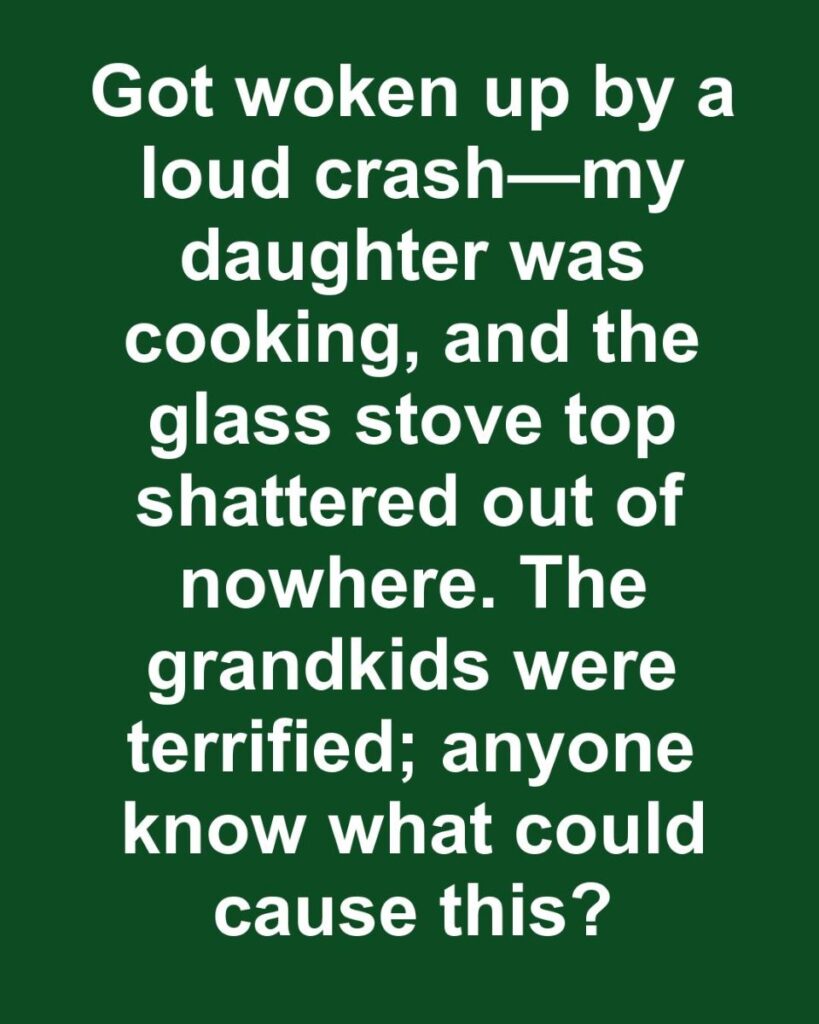I didn’t realize this could happen
Holly Owens
Contributing Writer
Print this recipe
In the quiet of the night, a sudden loud crash jolted me awake. Rushing to the kitchen, I found my daughter standing amidst shards of glass, her expression a mix of shock and confusion. The glass stove top had shattered unexpectedly while she was cooking, leaving my grandkids wide-eyed and frightened. This unexpected incident left us all wondering what could have caused such a dramatic event.
Understanding Glass Stove Tops: Composition and Vulnerabilities
Glass stove tops, also known as ceramic cooktops, are popular for their sleek design and ease of cleaning. They are made from a type of glass-ceramic material that is designed to withstand high temperatures. However, despite their durability, these surfaces have vulnerabilities. Understanding the composition and potential weaknesses of glass stove tops can help in identifying the causes of such incidents.
Common Causes of Glass Stove Top Shattering
While glass stove tops are generally safe, there are several reasons why they might shatter. Common causes include thermal shock, impact from heavy objects, and, though rare, manufacturing defects. Each of these factors can compromise the integrity of the glass, leading to a sudden and unexpected breakage.
Thermal Shock: A Leading Culprit
Thermal shock occurs when there is a rapid change in temperature that the glass cannot handle. This can happen if a cold pot is placed on a hot surface or if a hot pot is suddenly cooled. The abrupt temperature change can cause the glass to expand or contract quickly, resulting in shattering. Ensuring gradual temperature changes can help prevent this issue.
Impact of Heavy Objects: Accidental Damage
Another common cause of glass stove top shattering is the impact from heavy objects. If a heavy pot or pan is accidentally dropped onto the surface, it can cause cracks or even shatter the glass. It’s important to handle cookware with care and avoid placing heavy items on the stove top to minimize the risk of damage.
Manufacturing Defects: Rare but Possible
Although rare, manufacturing defects can also lead to the shattering of glass stove tops. Imperfections in the glass or issues during the manufacturing process can create weak points that may eventually fail. If a defect is suspected, it’s advisable to contact the manufacturer for a replacement or inspection.
Preventive Measures: How to Avoid Future Incidents
To prevent future incidents, it’s important to follow some key preventive measures. Avoid placing cold items on a hot stove top and vice versa to prevent thermal shock. Handle cookware carefully to avoid accidental drops, and regularly inspect the stove top for any signs of damage or weakness. Additionally, using cookware that is appropriate for glass stove tops can help maintain their integrity.
Ensuring Safety in the Kitchen: Tips for Families
Safety in the kitchen is paramount, especially with children around. Educate family members about the proper use and care of glass stove tops. Keep children away from the stove while cooking, and ensure that all family members know what to do in case of an emergency. Having a fire extinguisher and first aid kit nearby can also enhance kitchen safety.
Conclusion: Learning from the Unexpected
While the incident of the shattered glass stove top was startling, it served as a valuable lesson in kitchen safety and the importance of understanding the appliances we use daily. By identifying potential causes and implementing preventive measures, we can reduce the risk of similar incidents in the future. Sharing experiences and knowledge can help others avoid the same unexpected surprises.

